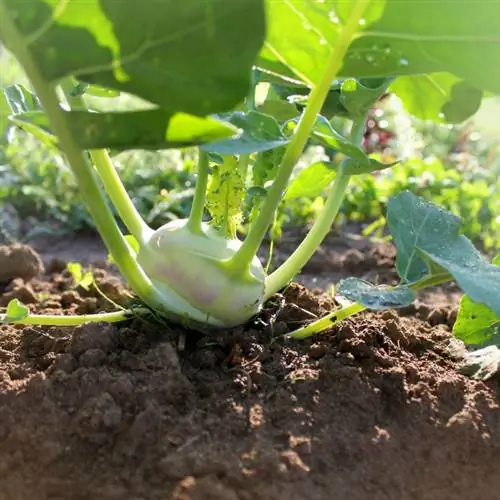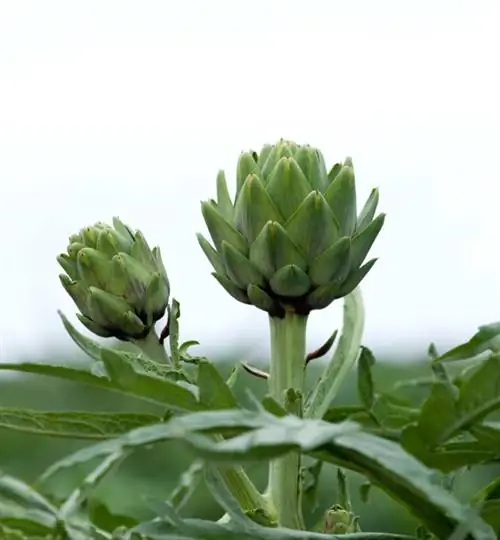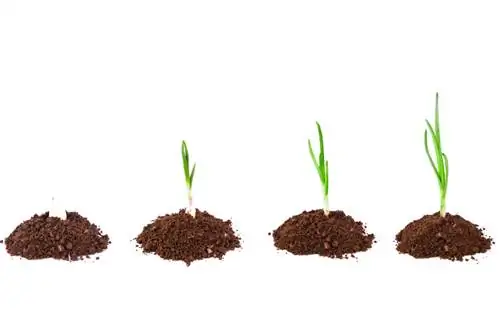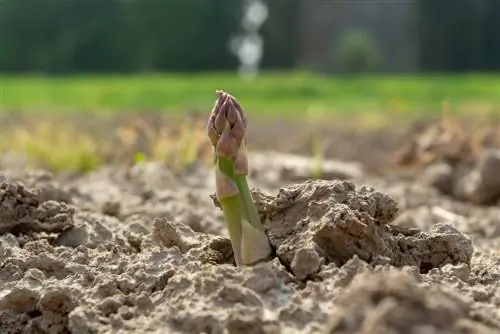- Author admin [email protected].
- Public 2023-12-16 16:46.
- Last modified 2025-06-01 06:02.
Kohlrabi is a member of the cabbage family. Most cabbage species are heavy feeders. Kohlrabi, on the other hand, does not place such high demands on soil conditions. If you work hard through the vegetable patch with humus and fresh manure in late autumn and leave it over the winter, at least the “initial population” of the kohlrabi will be well supplied with nutrients.
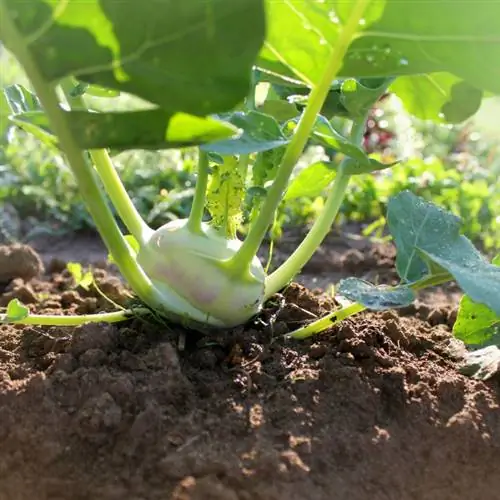
How can you grow kohlrabi successfully?
When growing kohlrabi, you should pay attention to generous planting distances, regular watering, crop rotation and mixed culture. The optimal distance is between 20 - 50 cm, and pay attention to suitable neighboring plants such as potatoes, tomatoes or lettuce.
Generous planting spacing for thick tubers
Before you start planting, make a groove in the bed with the rake. The marking makes it easier to position evenly. The early varieties need less space than the later ones: 20 - 30 cm distance between the plants is sufficient for the early varieties, and the row spacing should also be about the same. Later in the year, you should allow about 50 cm per kohlrabi plant - kohlrabi often has lush foliage. If you plant the plants too close together, the tubers will not develop optimally due to the lack of light and you will only harvest smaller, cylindrical fruits.
Watering and fertilizing
Even though kohlrabi is one of the easy-care types of cabbage, it needs your attention. If you want to harvest attractive, smooth tubers, regular watering of the plants is essential. If there are fluctuations in soil moisture, there is a risk that the kohlrabi will burst or become woody.
If you have prepared the soil well in autumn, the early kohlrabi will not need any additional fertilizer. However, if you want to harvest kohlrabi throughout the year, you should fertilize sparingly but continuously with nettle manure (€13.00 on Amazon) or horn meal. Caution: If you use too much fertilizer, the kohlrabi will accumulate nitrates.
Observe crop rotation
Cabbages are cruciferous vegetables and are heavy feeders. At the location where you cultivated cabbage varieties - including kohlrabi - you should not grow cabbage varieties for at least 3 - 4 years. Otherwise, the plants will die and the harvest will be small. In addition, the risk of pest infestation and diseases increases.
Cultivation in mixed culture
Sympathy or rejection is not limited to people. Even in the plant kingdom there are plants that support each other and those that you shouldn't bring together. For example, kohlrabi feels at home next to potatoes and tomatoes, chard, lettuce, cucumbers and marigolds. However, the neighborhood with other cruciferous vegetables is not recommended. These include, among other things: Gold lacquer, lev berths and blue cushions.
Tips & Tricks
When introducing the plants into the bed, make sure that they are not planted too deep. Otherwise the tuber will rot when it touches the soil.

